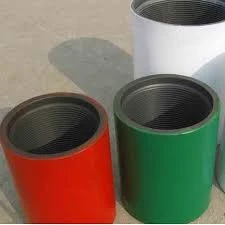- Afrikaans
- Albanian
- Amharic
- Arabic
- Armenian
- Azerbaijani
- Basque
- Belarusian
- Bengali
- Bosnian
- Bulgarian
- Catalan
- Cebuano
- Corsican
- Croatian
- Czech
- Danish
- Dutch
- English
- Esperanto
- Estonian
- Finnish
- French
- Frisian
- Galician
- Georgian
- German
- Greek
- Gujarati
- Haitian Creole
- hausa
- hawaiian
- Hebrew
- Hindi
- Miao
- Hungarian
- Icelandic
- igbo
- Indonesian
- irish
- Italian
- Japanese
- Javanese
- Kannada
- kazakh
- Khmer
- Rwandese
- Korean
- Kurdish
- Kyrgyz
- Lao
- Latin
- Latvian
- Lithuanian
- Luxembourgish
- Macedonian
- Malgashi
- Malay
- Malayalam
- Maltese
- Maori
- Marathi
- Mongolian
- Myanmar
- Nepali
- Norwegian
- Norwegian
- Occitan
- Pashto
- Persian
- Polish
- Portuguese
- Punjabi
- Romanian
- Russian
- Samoan
- Scottish Gaelic
- Serbian
- Sesotho
- Shona
- Sindhi
- Sinhala
- Slovak
- Slovenian
- Somali
- Spanish
- Sundanese
- Swahili
- Swedish
- Tagalog
- Tajik
- Tamil
- Tatar
- Telugu
- Thai
- Turkish
- Turkmen
- Ukrainian
- Urdu
- Uighur
- Uzbek
- Vietnamese
- Welsh
- Bantu
- Yiddish
- Yoruba
- Zulu
Exploring the Benefits of Tubing Crossover in Oil and Gas Operations
The Importance of Tubing Crossovers in Oil and Gas Operations
In the oil and gas industry, the efficient and safe transportation of fluids is paramount. One crucial component in this logistical challenge is the tubing crossover, an essential piece of equipment that facilitates the connection between different types of piping, typically between the production tubing and the flowline. This article delves into the significance of tubing crossovers, their designs, applications, and the advantages they bring to various operations.
What Are Tubing Crossovers?
Tubing crossovers are specialized fittings designed to enable the seamless flow of hydrocarbons from the wellbore to the surface pipeline systems. These fittings allow operators to easily transition from one size or type of tubing to another, accommodating different pressures and fluid characteristics. Properly designed and installed crossovers reduce the risk of leaks and pressure loss, which are critical factors in maintaining operational efficiency and safety.
Design and Functionality
The design of tubing crossovers can vary significantly, typically featuring a robust, corrosion-resistant material that withstands the harsh conditions commonly encountered in oil and gas extraction. These fittings come in various configurations, including tapered, straight, and angle designs, to suit the specific requirements of production scenarios.
A tubing crossover can integrate additional features such as pressure gauges and valves, allowing for monitored adjustments during operations
. This integration not only enhances the adaptability of the system but also contributes to overall well integrity, offering operators greater control over the extraction process.tubing crossover

Applications in Industry
In practice, tubing crossovers are utilized in various stages of oil and gas operations, including drilling, production, and maintenance. During drilling, crossovers are crucial for switching between different diameters of drill pipes, which helps in optimizing drilling efficiency and combatting varying geological conditions. In production, they facilitate the transition from production tubing to flowlines, ensuring that fluids are transported swiftly and safely to processing facilities.
Crossovers are also vital during maintenance operations, allowing technicians to temporarily isolate sections of the tubing for repairs or cleaning without disrupting the entire production process.
Advantages of Tubing Crossovers
The use of tubing crossovers offers several advantages. Firstly, they enhance operational flexibility, enabling the use of multiple tubing sizes and types according to the specific demands of the extraction process. Secondly, they contribute to improved efficiency by minimizing fluid loss and ensuring a more effective flow rate. Lastly, they play a vital role in safety by reducing potential failure points within the system and preventing environmental hazards associated with leaks.
In conclusion, tubing crossovers are essential components in the oil and gas industry, facilitating the efficient and safe transport of fluids from the well to the surface. Their role in maintaining operational integrity and enhancing safety underscores the significance of investing in quality crossover designs and materials. As the demand for energy continues to grow, the importance of reliable tubing crossovers will only increase in ensuring sustainable and efficient oil and gas production operations.
-
Tubing Pup Joints: Essential Components for Oil and Gas OperationsNewsJul.10,2025
-
Pup Joints: Essential Components for Reliable Drilling OperationsNewsJul.10,2025
-
Pipe Couplings: Connecting Your World EfficientlyNewsJul.10,2025
-
Mastering Oilfield Operations with Quality Tubing and CasingNewsJul.10,2025
-
High-Quality Casing Couplings for Every NeedNewsJul.10,2025
-
Boost Your Drilling Efficiency with Premium Crossover Tools & Seating NipplesNewsJul.10,2025







